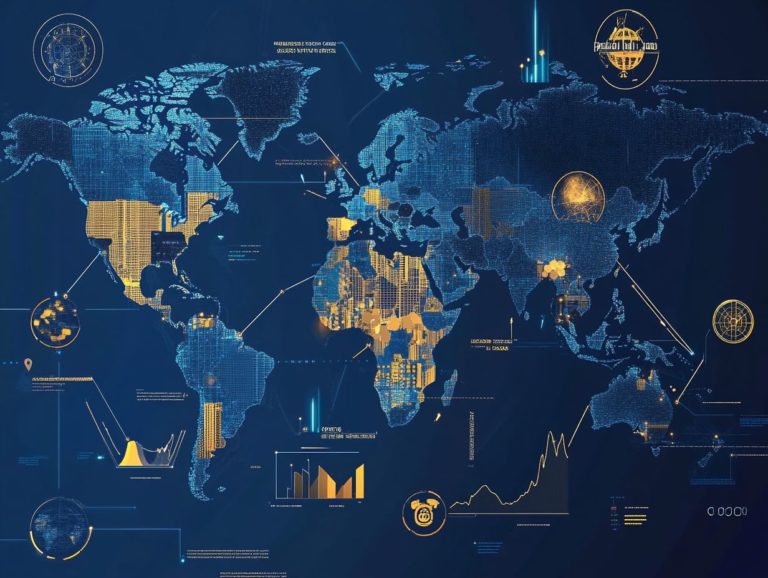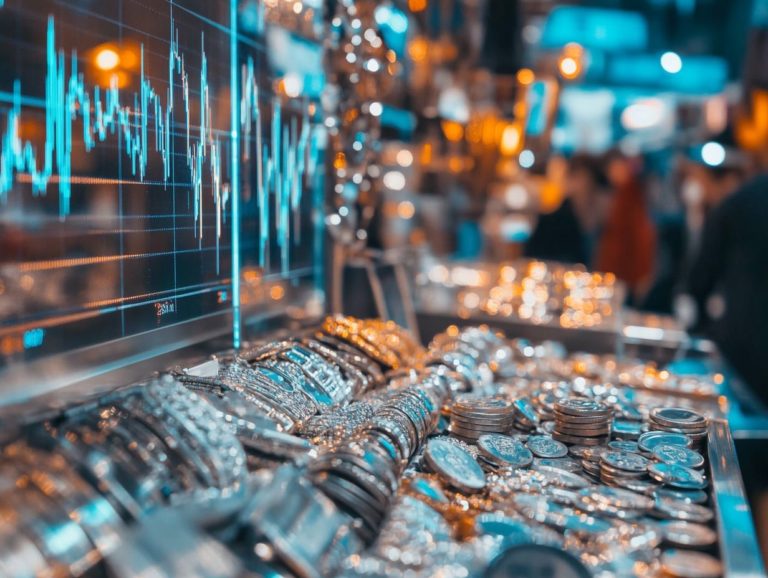Gold and Silver: Correlation Analysis
Precious metals like gold and silver have long captivated investors. They serve as both safe havens and symbols of wealth throughout history.
To make informed decisions about your investment, it s essential to understand the factors that influence their prices, such as global economic trends and the dynamics of supply and demand.
This article delves into the historical relationship between gold and silver. You ll also discover effective strategies for diversifying your portfolio.
Whether you re a seasoned investor or just beginning your journey, this guide offers valuable insights to help you navigate the intricate landscape of precious metals.
Contents
- Key Takeaways:
- Factors Influencing Gold and Silver Prices
- Correlation Between Gold and Silver
- Investing in Gold and Silver
- Strategies for Diversifying with Gold and Silver
- Frequently Asked Questions
- What is correlation analysis for gold and silver?
- How is correlation calculated for gold and silver?
- Is there a correlation between gold and silver prices?
- What factors can influence the correlation between gold and silver?
- How can investors use correlation analysis for gold and silver?
- Can correlation analysis be used to predict future price movements for gold and silver?
Key Takeaways:
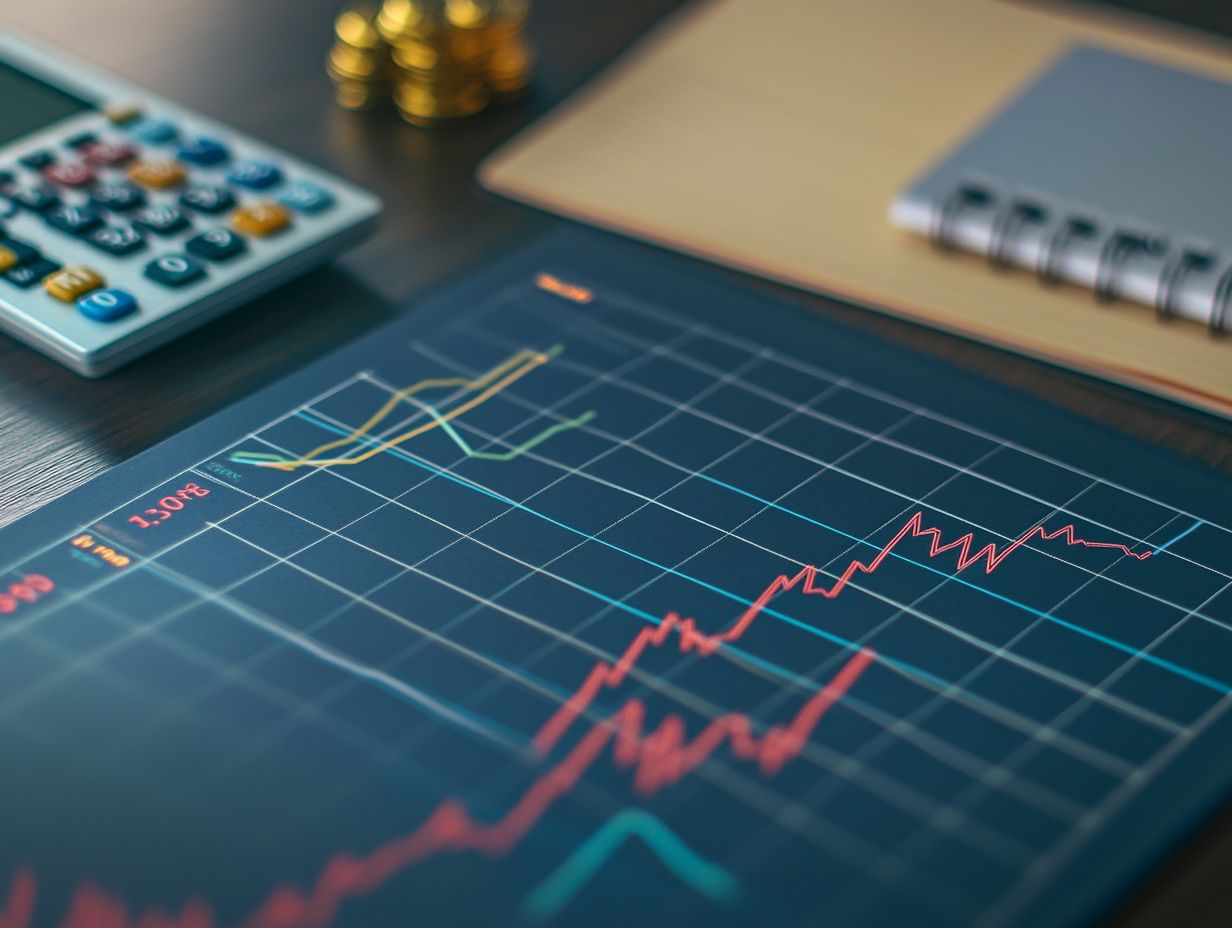
- Gold and silver prices shift with global trends and supply-demand dynamics.
- Their historical correlation makes them useful for portfolio diversification.
- Investing carries both benefits and risks, so plan your portfolio wisely.
Overview of Precious Metals
Precious metals like gold and silver have long been pivotal in financial markets. They serve as a reliable hedge against inflation and currency fluctuations.
From their influence during the Roman Empire to the Coinage Act signed by President Roosevelt in the 20th century, these metals have shaped economic stability. They continue to captivate investors with their fluctuating market prices.
As the global economy faces increasing volatility, the inherent value of these metals as a store of wealth becomes all the more crucial especially as you look toward 2024, a year many anticipate will bring shifts in the gold-silver ratio.
Historically, these metals have served not just as currency but also as a safe haven during times of crisis. Today, their prices are particularly sensitive to a range of factors, including fluctuations in inflation rates, changes in the USD index, and overall investor sentiment.
With inflation on the rise, investors are racing toward precious metals to secure their wealth! You may notice many individuals rushing toward precious metals, driving up demand and, consequently, prices. Fluctuations in the U.S. dollar’s value can impact the market; a weaker dollar tends to encourage investment in these tangible assets.
By grasping these dynamics, you can glean valuable insights into current trends and understand the forces behind market movements. Precious metals remain a lasting focal point for both seasoned and emerging investors alike.
Factors Influencing Gold and Silver Prices
The prices of gold and silver are swayed by a myriad of factors, such as investor behavior, market volatility, and global economic conditions. These factors are important for anyone thinking about investing in precious metals.
As markets ebb and flow, grasping the trade ratio between gold and silver can offer valuable insights into potential price trends. This understanding can enable you to make informed hedging decisions, which help protect investments from market fluctuations, enhancing your investment strategy in this dynamic landscape.
Global Economic Trends
Global economic trends have a significant impact on the market prices of gold and silver. As fluctuations in the USD index and inflation rates shape investor behavior, you ll find that demand for these precious metals is closely tied to the economic climate.
The landscape in 2020, particularly in the wake of COVID-19, reshaped investor priorities. Many turned to gold and silver as safe-haven assets amid growing uncertainty.
This pivot led to unprecedented price surges, especially during the peak of the pandemic when traditional investments were anything but stable. As countries rolled out stimulus measures, concerns about inflation escalated, further fueling interest in these commodities.
Looking ahead, if inflation remains high and economic stability continues to waver, you can expect demand for gold and silver to persist. As 2024 approaches, keep an eye on various forecasts suggesting that geopolitical tensions and monetary policy decisions will play pivotal roles in shaping the trajectory of precious metal prices. Investors will undoubtedly be watching market signals for any potential shifts.
Supply and Demand Dynamics
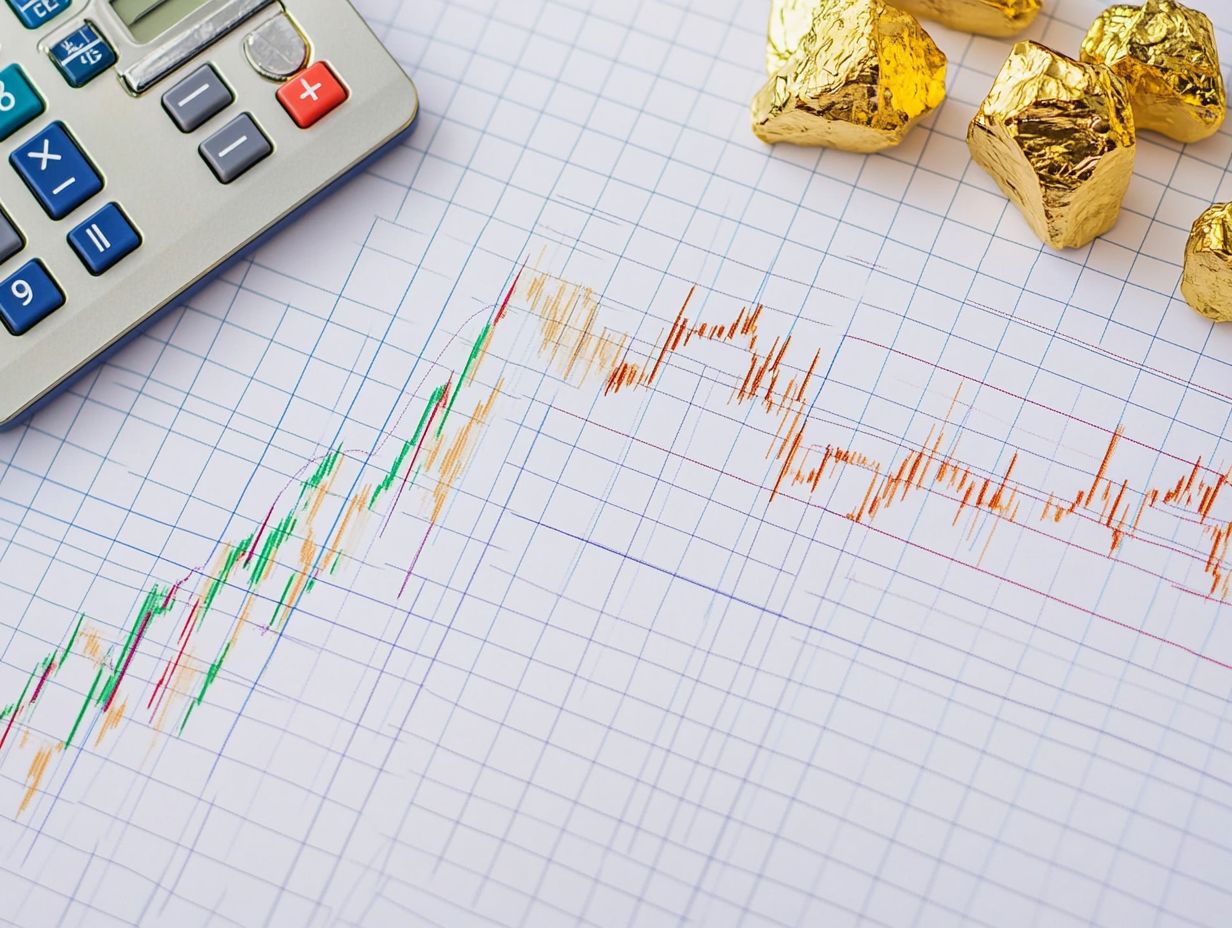
The dynamics of supply and demand for gold and silver play an important role in determining their market prices. These prices are influenced by various elements such as mining output, industrial applications, and investment trends.
In 2021, there was a significant surge in silver demand, particularly in sectors like electronics. Meanwhile, gold continued to attract investors looking for safety against economic instability.
This rising interest in silver can be traced back to its essential role in modern manufacturing technologies, especially in solar panels and electric vehicles. This underscores silver’s versatility in an ever-evolving market.
Mining activities face hurdles due to environmental regulations and resource depletion, which can impact overall availability. Recycling rates for both metals have become increasingly vital, providing a sustainable supply source that helps alleviate some pressures from primary mining.
This intricate interplay of factors illustrates how shifts in demand not just from traditional jewelry and investment, but also from emerging industrial sectors can lead to notable price fluctuations. Recent market trends show this very clearly.
Correlation Between Gold and Silver
The relationship between gold and silver is typically measured by the gold-silver ratio. This ratio shows how many ounces of silver equal one ounce of gold. It serves as a valuable tool for understanding market dynamics.
As an investor, you’ll find it helpful to analyze this ratio to forecast market movements. Recognizing fluctuations can signal broader economic conditions or shifts in investor sentiment.
Historical Trends and Patterns
Examining trends in gold and silver prices is essential for you as an investor. Focus particularly on the critical years between 1991 and 2020. This period highlights significant volatility and stability.
Throughout these three decades, various geopolitical tensions, including conflicts and shifts in monetary policies, have shaped market dynamics. For instance, the financial crisis of 2008 led to a dramatic surge in gold prices as investors flocked to safe-haven assets amid escalating economic uncertainty.
In contrast, the gradual recovery from 2010 to 2016 revealed a more stable market environment. During this time, silver prices were also influenced by industrial demand and changing investor sentiment.
By analyzing these pivotal events, you’ll navigate future markets with greater confidence. This will help you develop informed strategies that leverage historical insights to your advantage.
Investing in Gold and Silver
Investing in gold and silver gives you an exciting opportunity to diversify your portfolio and protect against rising prices. However, it’s crucial to acknowledge the inherent risks that accompany these opportunities.
Market volatility and potential shifts in the gold-silver ratio are factors that any discerning investor, like yourself, should carefully consider.
Start exploring your investment options today!
Benefits and Risks
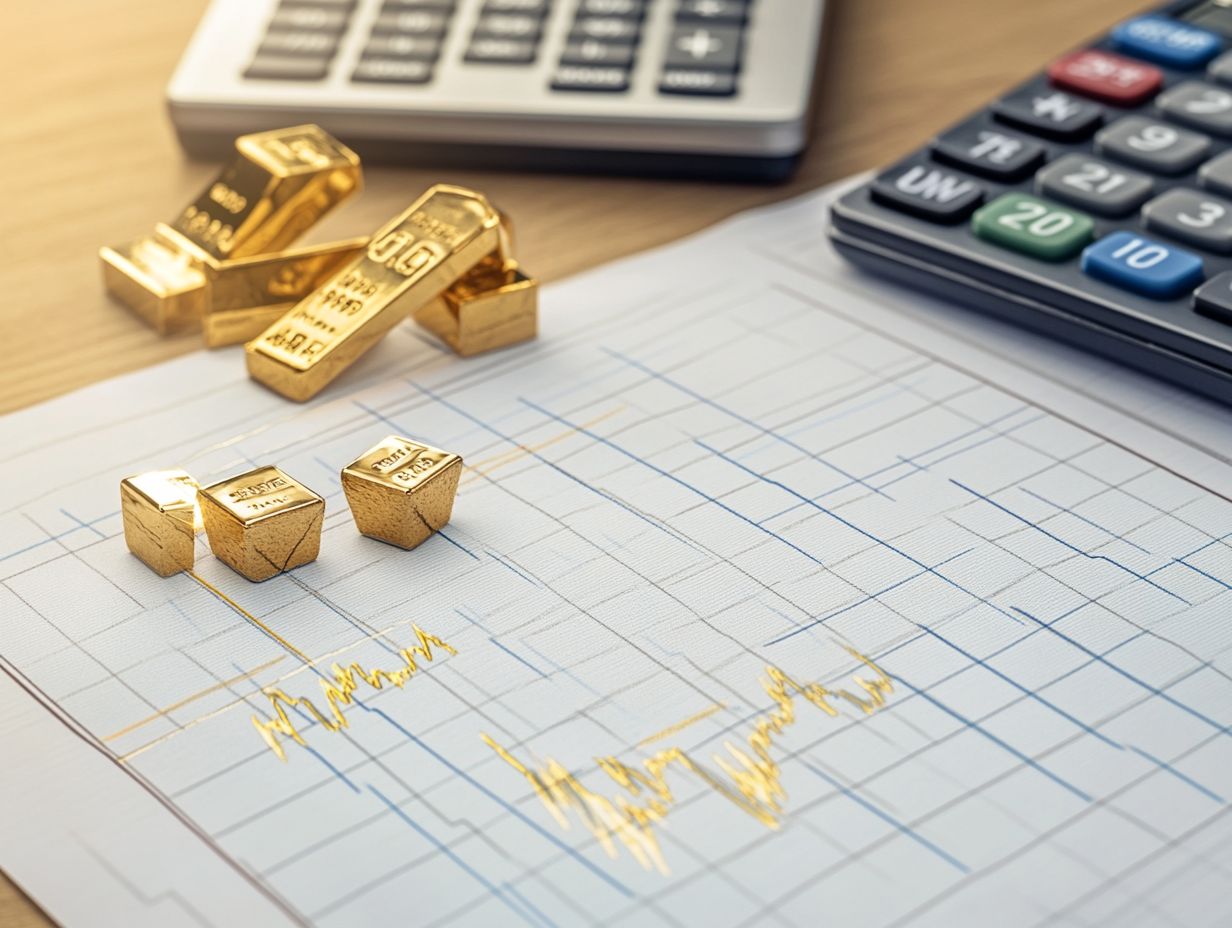
Investing in gold and silver is more than just preserving wealth. They protect you against economic downturns and inflation!
These precious metals have shown remarkable resilience during financial crises, often retaining or even increasing their value when paper currencies struggle. This quality makes them reliable safe-haven assets, especially in uncertain economic times.
By incorporating gold and silver into a diversified portfolio, you can reduce overall risk and balance out more volatile investments like stocks or cryptocurrencies. Keep in mind the inherent price fluctuations that come with these metals.
Market dynamics driven by geopolitical tensions, interest rates, and global supply-demand scenarios can lead to unpredictable price changes. A careful and well-researched approach is essential to navigate these complexities and achieve favorable outcomes.
Strategies for Diversifying with Gold and Silver
Want to mitigate risk and boost returns? Diversifying with gold and silver is a smart move! You must cultivate a well-thought-out investment strategy to ensure your success.
This involves understanding market trends, the relationship between gold and silver prices, and how these metals fit into the broader investment landscape.
Portfolio Allocation and Management
Effective portfolio allocation and management of gold and silver require a solid grasp of market dynamics and your investment goals. This knowledge helps you balance the potential rewards and risks associated with these precious metals.
Finding the right mix of gold and silver can significantly impact your overall portfolio performance, especially in volatile markets. Regularly assess your risk tolerance, time horizon, and financial aspirations to achieve optimal allocation.
Establishing a strategy that emphasizes diversification not only mitigates risks but also maximizes your potential gains. Keeping an eye on the gold-silver ratio provides valuable insights, allowing you to adjust your allocations as market conditions change.
Regularly reviewing your investment performance ensures alignment with your financial goals and facilitates timely adjustments. This proactive approach positions you to seize market opportunities as they arise.
Frequently Asked Questions
What is correlation analysis for gold and silver?
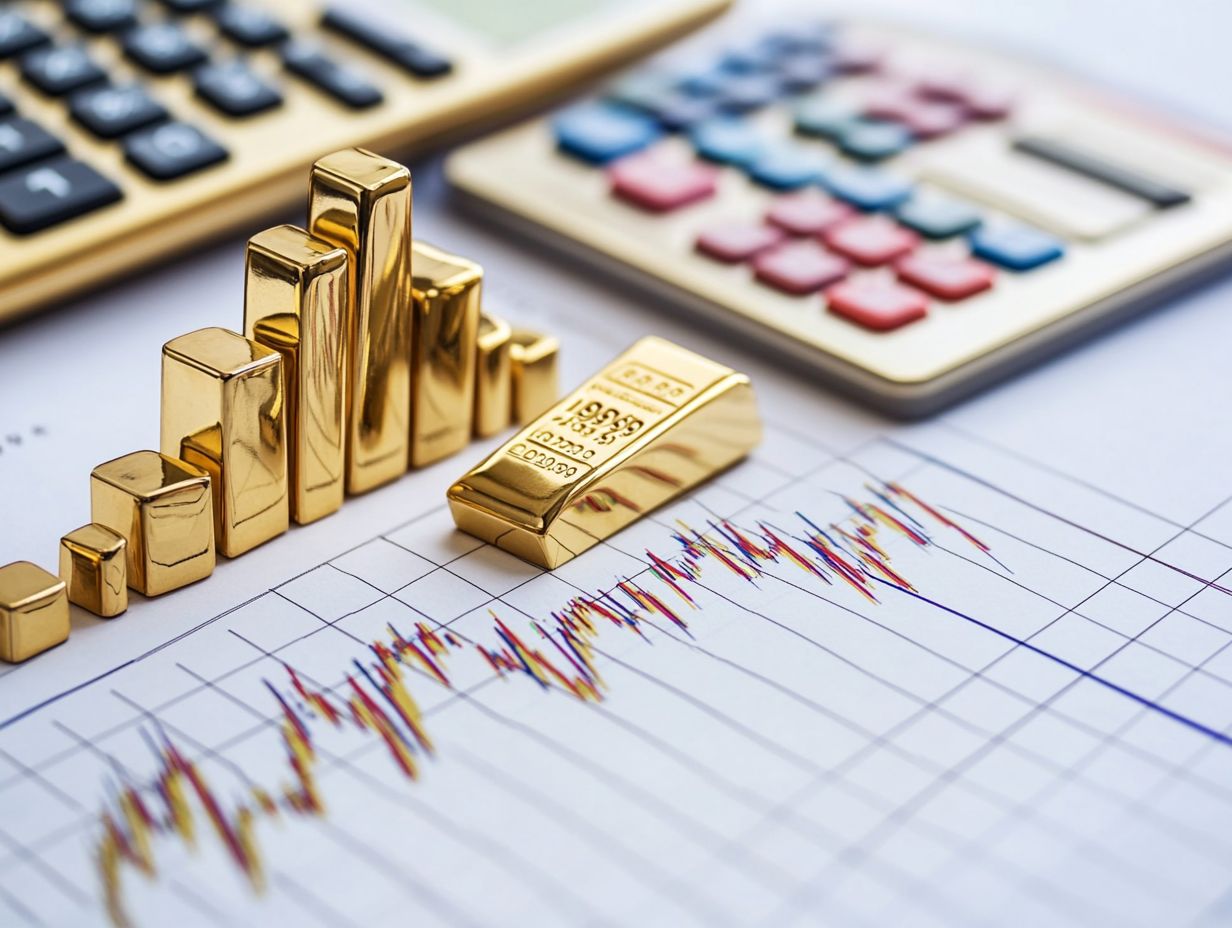
Correlation analysis for gold and silver is a method used to understand how the prices of these two metals relate to each other. It helps investors see how changes in one metal’s price may affect the other, allowing for more informed decision-making.
How is correlation calculated for gold and silver?
Correlation is usually calculated using historical price data for gold and silver. This involves determining the strength and direction of their relationship, with +1 showing a perfect positive correlation and -1 a perfect negative correlation.
Is there a correlation between gold and silver prices?
Yes, there is generally a positive correlation between gold and silver prices. As the price of gold rises, the price of silver usually follows suit. However, the strength of this correlation can vary over time due to different market factors.
What factors can influence the correlation between gold and silver?
The correlation between gold and silver prices can be affected by numerous factors, including economic conditions, geopolitical events, and supply and demand dynamics. Investor sentiment and currency movements can also play a role in this correlation.
How can investors use correlation analysis for gold and silver?
Investors can use correlation analysis to understand the relationship between gold and silver prices. A strong correlation indicates higher risk, as both metals often move together.
To manage this risk, diversifying with other assets is key. This can help create a more balanced portfolio.
Can correlation analysis be used to predict future price movements for gold and silver?
Correlation analysis measures how gold and silver prices relate to each other. However, it does not predict future prices.
Past performance is not a guarantee of future results. Investors should combine correlation analysis with other tools when making decisions.










